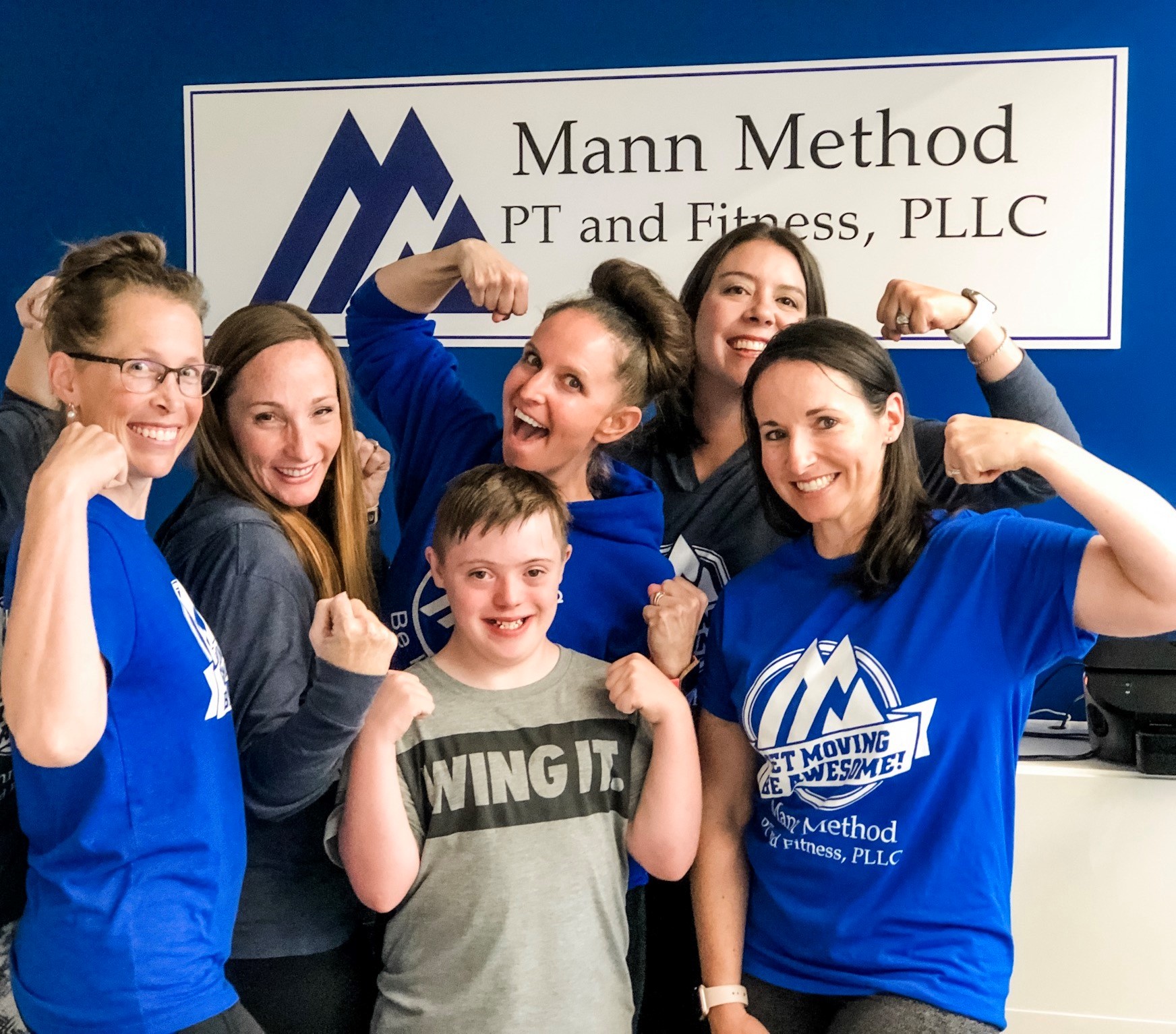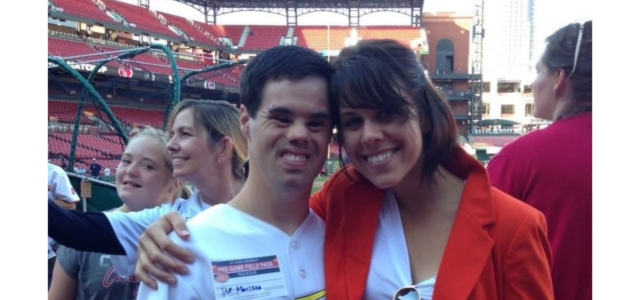
Strength, Stability, Balance, Endurance

Physical therapists share preventative PT techniques for people with Down syndrome
From Down Syndrome World Issue 3, 2021
“Often times people think of physical therapy (PT) as a place to recover from an injury, like learning to walk after a broken leg. Physical therapy is unique in that we can help when things are hurting, but also provide targeted interventions with the purpose of prevention,” says physical therapist Dr. Sarah Mann, PT, DPT, MBA, NSCA-CPT, founder and CEO of Mann Method PT and Fitness, PLLC and Mann Therapies. “With PT, we encourage listening to the body and taking early action to create healthy and sustainable habits that, over time, can reduce potential problems in the future.”
People with Down syndrome have a unique physiology that impacts their musculoskeletal and cardiovascular systems. Characteristics such as low resting muscle tone, flat feet, joint instability, and low cardiovascular endurance can cause problems like obesity, joint pain, and fatigue. PT addresses physical issues at their root level, first building on the underlying foundational motor skills and then honing those skills to strengthen specific areas of the body. Results include healthier weight management, increased strength, improved balance, increased bone density, improved bowel movements, decreased rates of arthritis and osteoporosis, and ultimately lower levels of pain and fatigue. In turn, this leads to increased motivation for physical activity, improved social functioning with peers, and overall sense of well-being.
Down syndrome physical therapy experts Dr. Sarah Mann, Dr. Patricia Shimanek, and Dr. Kia Mattison share their PT strategies and techniques to address common physical issues experienced by individuals with Down syndrome.
Strength, Stability, Balance, Endurance
“Movement should be purposeful,” says Dr. Mann, who emphasizes four key training areas in her PT method: Strength, Stability, Balance, and Endurance. “After working with hundreds of individuals with Down syndrome and learning how they often respond to various exercises, I find that exercise programs combining these four categories are the most effective in addressing impairments and helping prevent future complications.”
Her physical therapy program, called the Mann Method™, combines foundational movements, hip strengthening, vestibular, and cardiovascular training to focus on multi-joint movements that activate the feet, knees, hips, trunk, and core. Foundational exercises like squats help build muscle and improve function, while balance exercises like lateral tilts help improve weight shift for walking. Progressive sequencing through these various exercises helps build cardiovascular endurance.
“Repetition is a great way to ingrain certain movements into muscle memory,” says Dr. Patricia Shimanek, PT, DPT, an orthopedist at Advocate Aurora General Hospital and mother to a 25-year-old son with Down syndrome. “When my son does push-ups, for example, sometimes he will arch his back too much or hyperextend his elbows. The more he practices the correct form, the better he is able to recognize when and how he needs to move his body to get there.”
Start with the Feet!
Before attending your first PT session, the experts advise to first check your feet! 91% percent of people with Down syndrome have a flat-foot position, which can cause painful misalignments, bad posture, joint pain, and poor proprioception (awareness of body position and movement).
“A reason a lot of adolescents complain of knee pain may be because they’re wearing the wrong footwear. When your foot hits the ground, if it’s not contacting the ground appropriately, it changes the mechanics all the way up effecting the knee, hips, back, and neck,” says Dr. Shimanek. “A quick change in shoes can make a world of difference, helping them to stand up a bit taller, keep their head up, and improve musculoskeletal strength.”
There are many orthotic support options that can be added to your shoes, such as cushion insoles, custom arch supports, and more. If shoe supports do not provide enough stability, PTs can also evaluate for higher level orthotic needs.
Techniques
“Consistency is hugely important to a successful PT program,” says Dr. Kia Mattison, PT, DPT, Director of Physical Therapy at Cobblestone Therapy Group in Roswell, Georgia. “With children, it helps to develop a reward system that encourages this, such as a couple of PT exercises means a couple minutes of playtime. The PT should also collaborate with the patient’s full care team to ensure routines are being practiced and reinforced in various settings.”
Dr. Mattison also advises taking things slow. “Take things one step at a time to allow the individual to gain a mastery of one step before moving onto the next one,” she says. “However, progress takes time and can build slowly over several weeks or months. Make sure to celebrate all the milestones big and small!”
Drs. Mann, Shimanek, and Mattison agree that physical therapy is a lifetime investment. It is not meant to be a temporary intervention that fixes a problem, but instead a training process that builds skills and improves functioning over time.
GET MOVING!
See below exercise modules from GLOBAL’s Webinar with Dr. Sarah Mann “Strength, Stability, Balance, and Endurance – Purposeful PT for Teens and Adults with Down Syndrome.”
To learn more, visit…
Mann Method PT: www.mannmethodpdt.com
Cobblestone Therapy Group: cobblestonetherapy.com/physical-therapist
GLOBAL’s PT Webinar with Sarah Mann: globaldownsyndrome.org/global-webinar-series-spring-2021
Like this article? Join Global Down Syndrome Foundation’s Membership program today to receive 4 issues of the quarterly award-winning publication, plus access to 4 seasonal educational Webinar Series, and eligibility to apply for Global’s Employment and Educational Grants.
Register today at downsyndromeworld.org!







 Experience our inspirational and groundbreaking videos and photos. Our children and self-advocates are beautiful AND brilliant!
Experience our inspirational and groundbreaking videos and photos. Our children and self-advocates are beautiful AND brilliant! Make sure your local Representatives are on the Congressional Down Syndrome Task Force.
Make sure your local Representatives are on the Congressional Down Syndrome Task Force.